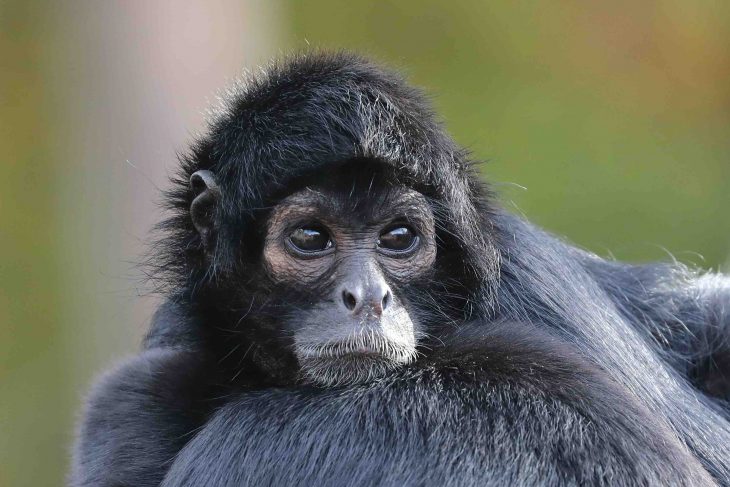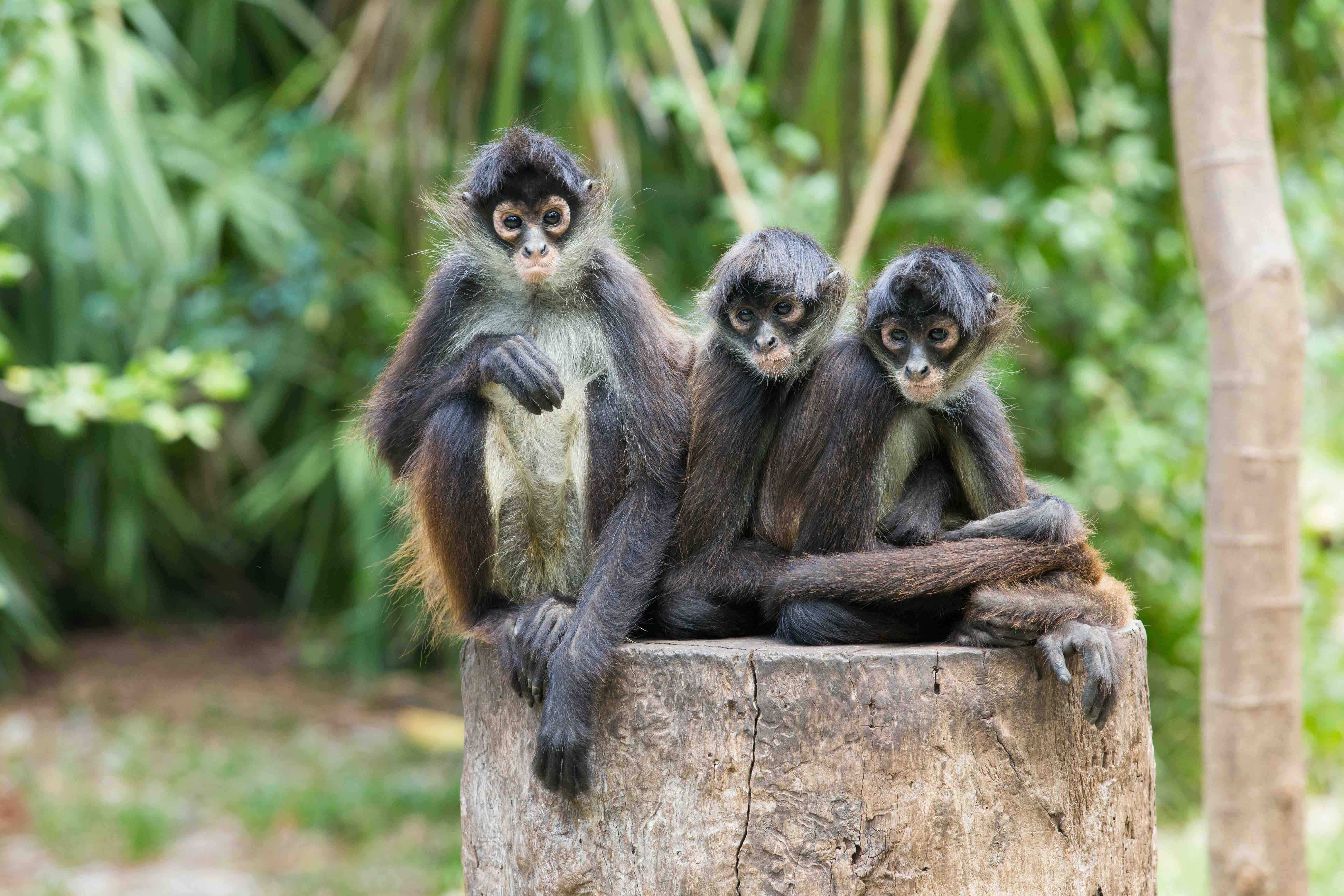
Spider monkeys are captivating creatures that inhabit the lush rainforests of Central and South America. With their long limbs and prehensile tails, they are known for their remarkable agility and acrobatic skills. In this article, we will uncover twenty fun facts about spider monkeys, shedding light on their fascinating behaviors, social dynamics, and unique adaptations. Join us as we embark on a journey through the treetops and delve into the world of these charismatic primates!
Agile Acrobats
Spider monkeys are highly agile and skillful climbers. They can effortlessly move through the treetops, leaping from branch to branch and using their long limbs and tails for balance. Their acrobatic abilities are truly impressive.
Prehensile Tails
One of the most distinguishing features of spider monkeys is their prehensile tails. These long, muscular tails act as an extra limb, providing them with enhanced agility and allowing them to grasp and hang from branches.
Social Species
Spider monkeys are highly social animals and live in large groups known as troops. These troops can consist of up to 30 individuals, creating a complex social structure where cooperation and communication are essential.
Vocal Communication
Spider monkeys use a variety of vocalizations to communicate with their troops. These vocalizations include calls, screams, and barks, which serve to maintain group cohesion, establish territory, and communicate danger.
Frugivorous Diet

Spider monkeys primarily feed on fruits, making them frugivores. Their diet consists of a wide variety of fruits, including berries, figs, and tropical fruits. This diet plays a vital role in seed dispersal and contributes to the diversity of plant life in their habitat.
Seed Dispersers
As spider monkeys consume fruits, they inadvertently play a crucial role in seed dispersal. Seeds that pass through their digestive system are excreted in different locations, helping to propagate plant species and maintain the balance of their ecosystem.
Flexible Diet
While fruits form the majority of their diet, spider monkeys are known to supplement it with leaves, flowers, seeds, and occasionally insects. This dietary flexibility allows them to adapt to seasonal changes and varying food availability.
Matrilineal Society
Spider monkeys have a matrilineal social structure, meaning that females play a prominent role in the troop. They are the ones who maintain and pass down the social hierarchy, while males often leave the troop to join new groups.
Playful Nature
Spider monkeys are known for their playful behavior. They engage in social play, swinging from branches, chasing each other, and engaging in wrestling-like interactions. Play serves important social and developmental roles within the troop.
Long Lifespan
Spider monkeys have relatively long lifespans compared to many other primates. In the wild, they can live up to 25 years, while those in captivity have been known to reach their early 40s.
Family Bonds
Within spider monkey troops, strong bonds form between family members. Mothers are particularly attentive to their offspring, carrying them for an extended period and providing them with constant care and protection.
Home Range Defenders
Spider monkeys are territorial and defend their home ranges from neighboring troops. Males play an active role in patrolling and marking boundaries, ensuring the safety and resources of their troop.
Fast and Efficient Travelers
Spider monkeys are known for their efficient mode of travel known as brachiation. They use their long limbs and tails to swing through the trees, covering large distances quickly while conserving energy.
Ecological Indicator Species
Spider monkeys are considered indicator species, meaning their presence or absence in an ecosystem can provide valuable insights into the overall health and biodiversity of the environment. Their decline or disappearance can indicate ecological imbalances.
Vulnerability to Habitat Loss

Spider monkeys are threatened by habitat loss due to deforestation and human activities. As their forest habitats diminish, their populations become increasingly vulnerable. Conservation efforts are crucial to ensure their survival.
Tool Usage
While not as extensively studied as some other primate species, spider monkeys have been observed using tools in certain contexts. They have been seen using branches as tools to manipulate their environment and extract food.
Slow Reproductive Rates
Spider monkeys have relatively slow reproductive rates. Females typically give birth to a single offspring after a long gestation period of around 7 to 8 months. This slow reproductive cycle contributes to their vulnerability to population declines.
Excellent Spatial Memory
Spider monkeys have excellent spatial memory, allowing them to remember the location of important resources such as fruiting trees and water sources within their habitat. This cognitive ability helps them efficiently navigate their environment.
Threats from Hunting
In some regions, spider monkeys face threats from hunting for their meat and illegal pet trade. These activities have contributed to population declines and have led to their protected status in many countries.
Conservation Efforts
Numerous conservation organizations and researchers are working to protect spider monkeys and their habitats. Efforts include habitat restoration, community education, and combating illegal hunting to ensure a future for these incredible primates.
Conclusion
In conclusion, spider monkeys are charismatic creatures with remarkable adaptations and social dynamics. Their agility, prehensile tails, and frugivorous diet make them true acrobats of the rainforest. As we strive to protect their habitats and understand their ecological importance, we can appreciate the uniqueness and wonder of these incredible primates.
Frequently Asked Questions (FAQs)
Are spider monkeys dangerous to humans?
Spider monkeys are generally not dangerous to humans. They are shy and tend to avoid human interactions unless threatened or cornered. It’s important to respect their space and observe them from a distance in the wild.
How far can spider monkeys swing on their prehensile tails?
Spider monkeys can swing on their prehensile tails and reach impressive distances. They can swing up to 40 feet or more, allowing them to traverse the forest canopy with agility and grace.
Can spider monkeys swim?
Spider monkeys are not known for their swimming abilities. They primarily inhabit forested areas and spend their lives in the trees, relying on their agility and brachiation skills for locomotion.
Do spider monkeys make good pets?
No, spider monkeys do not make good pets. They are wild animals with complex social needs and specialized dietary requirements. Keeping them as pets is illegal in many countries and can be detrimental to their well-being.
How can I support spider monkey conservation efforts?
You can support spider monkey conservation efforts by donating to reputable organizations dedicated to their protection, spreading awareness about their conservation needs, and making sustainable choices that contribute to the preservation of their habitats.
Was this page helpful?
Our commitment to delivering trustworthy and engaging content is at the heart of what we do. Each fact on our site is contributed by real users like you, bringing a wealth of diverse insights and information. To ensure the highest standards of accuracy and reliability, our dedicated editors meticulously review each submission. This process guarantees that the facts we share are not only fascinating but also credible. Trust in our commitment to quality and authenticity as you explore and learn with us.


